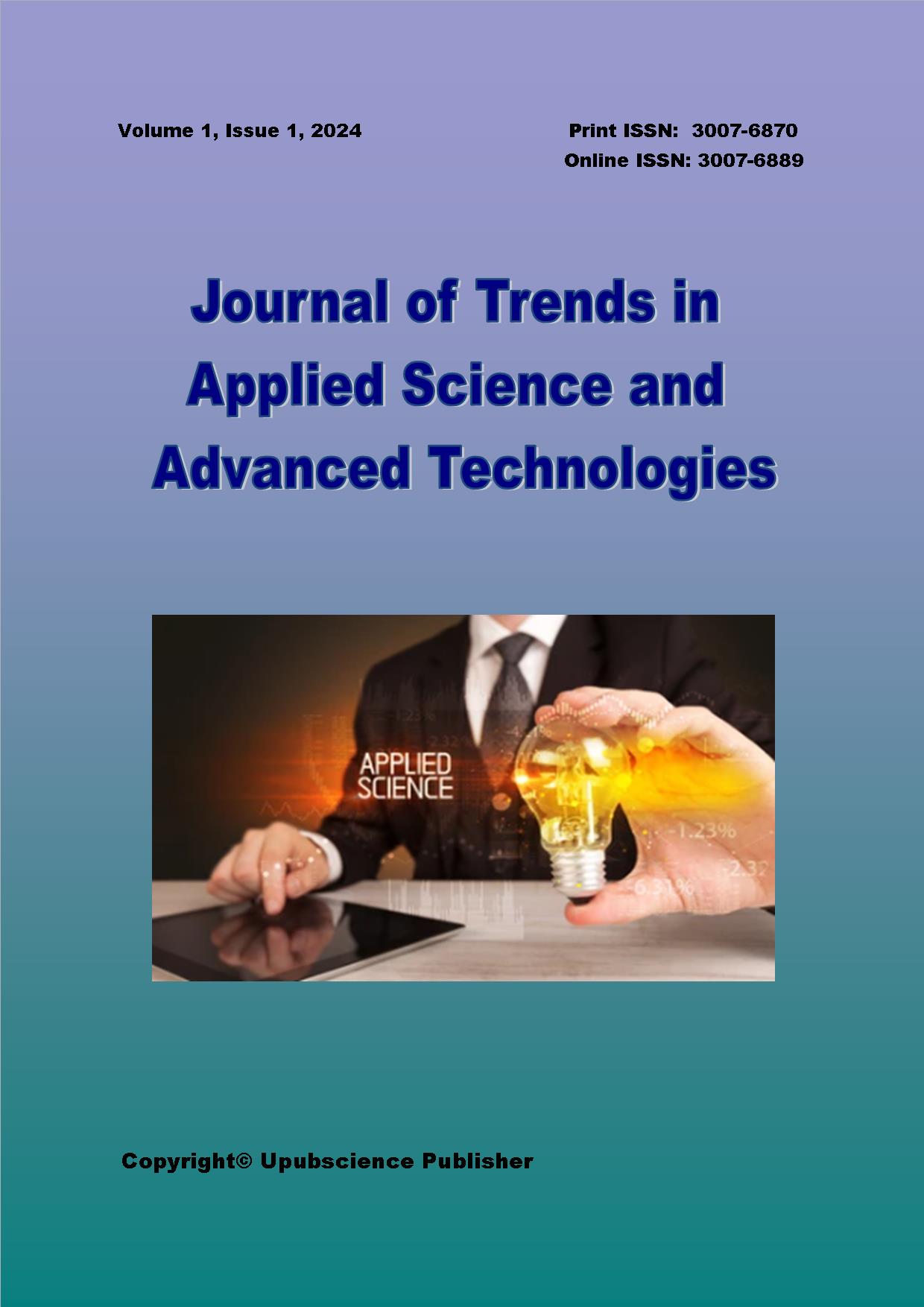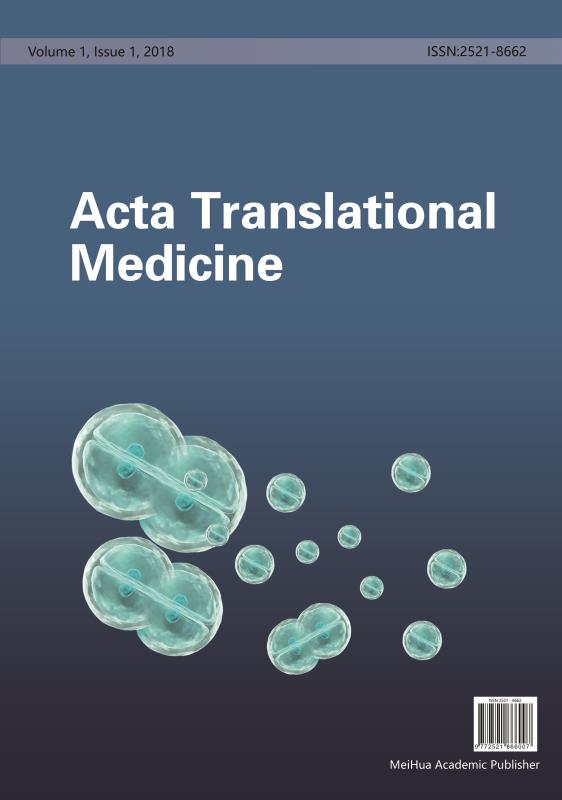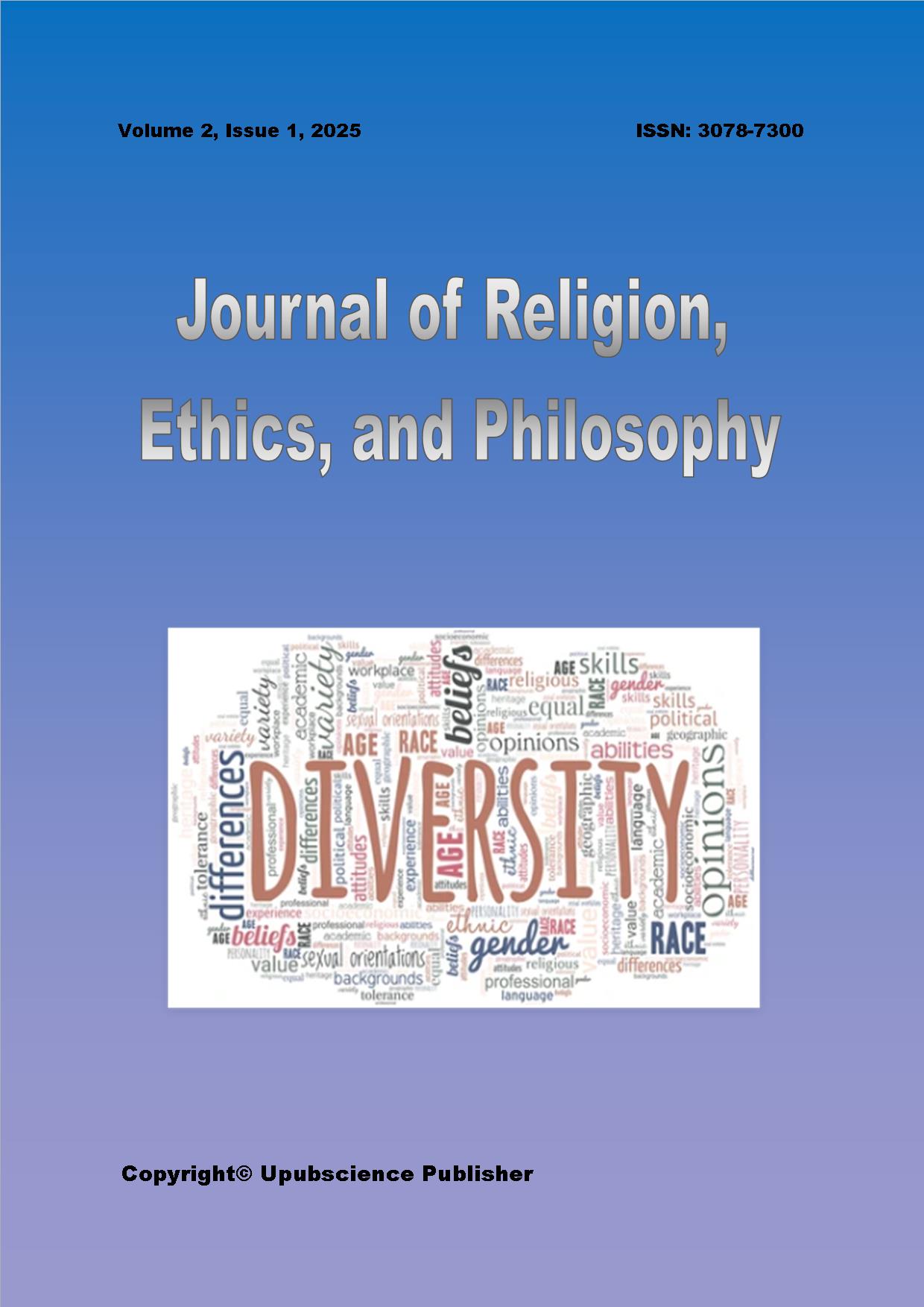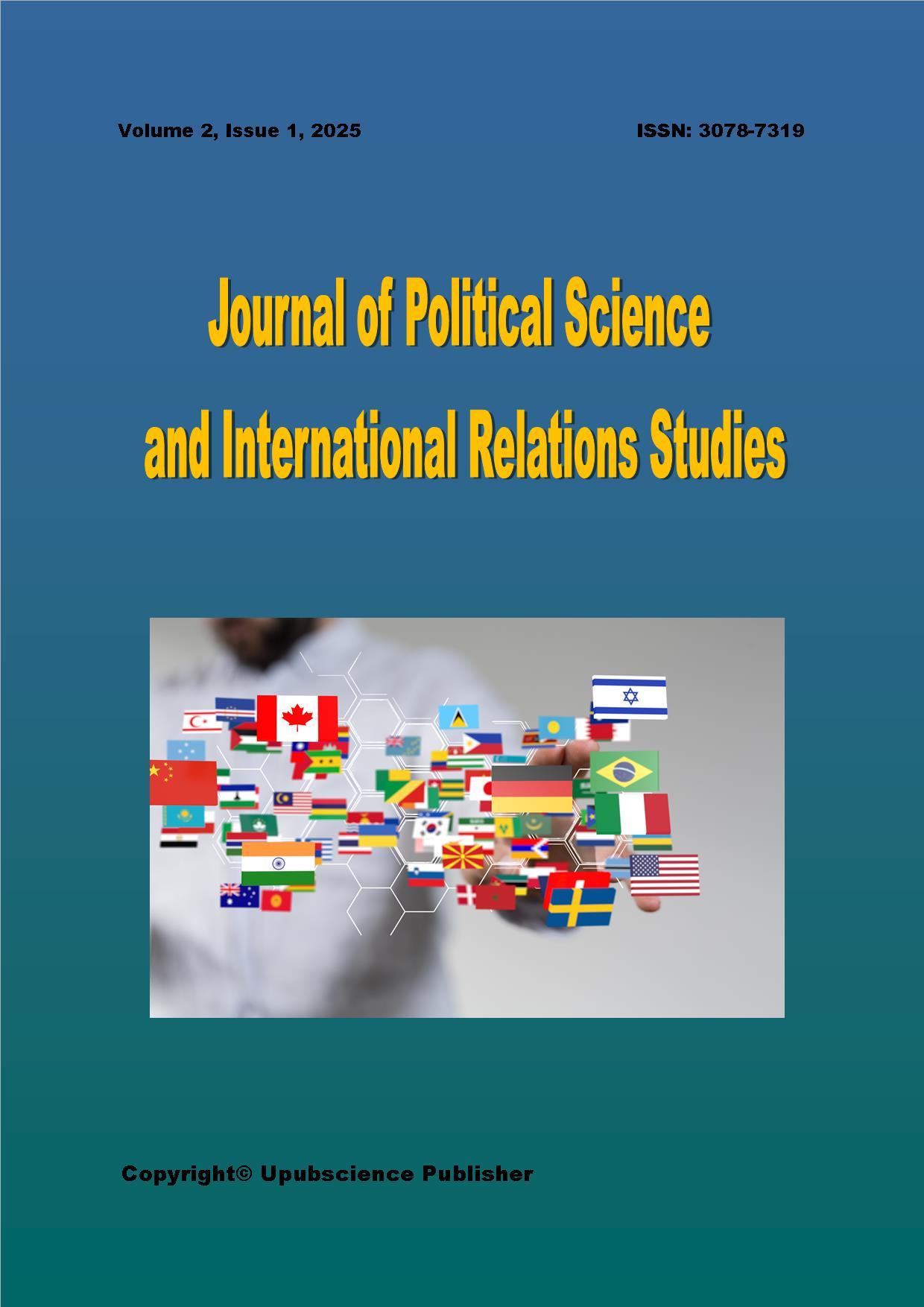
Journal of Trends in Applied Science and Advanced Technologies
Print ISSN: 3007-6870 Online ISSN: 3007-6889
Authors' Guidelines
Manuscripts submitted to Upubscience should neither be published previously nor be under consideration for publication in another journal. The main article types are listed below and a comprehensive list of article types can be found here.
Article: These are original research manuscripts. The work should report scientifically sound experiments and provide a substantial amount of new information. The article should include the most recent and relevant references in the field. The structure should include an Abstract, Keywords, Introduction, Materials and Methods, Results, Discussion, and Conclusions (optional) sections, with a suggested minimum word count of 4000 words.
Review: Reviews offer a comprehensive analysis of the existing literature within a field of study, identifying current gaps or problems. They should be critical and constructive and provide recommendations for future research. No new, unpublished data should be presented. The structure can include an Abstract, Keywords, Introduction, Relevant Sections, Discussion, Conclusions, and Future Directions, with a suggested minimum word count of 4000 words.
All manuscripts and any supplementary material should be submitted via the Submission System or to the respective journal email address: asat@upubscience.com or editor@upubscience.com
An original article would normally consist of 3000-7000 words (excluding figures, tables, and references), although high-quality articles which exceed 7000 words will be considered.
All articles must be written in English, using UK spelling and terminology. The text and English language in new and revised articles must be checked, edited and corrected by the authors, preferably with the help of a native English speaker.
Submissions may be formatted in single or double spacing, preferably in Times New Roman size 10 font. All accepted articles will be correctly formatted for publication.
The text of the article should include the following:
Title
Author(s)
Affiliation(s)
Abstract
Keywords
Text body
References and notes
Tables, figure captions and figures
Template (Word) for all journals is available here, should you wish to use. Although the templates will allow you to estimate the total number of pages if typed in single-line spacing, it is not essential that you use one, since all accepted articles will, as stated above, be correctly formatted for publication by Upubscience Publisher.
Title, Abstract, Keywords, Addresses
Title, author(s), and affiliations should all be included on a title page as the first page of the manuscript file, followed by a 100-300 word abstract and 3-5 keywords. The order they follow is: Title, Authors, Affiliations, Abstract, Keywords.
Title: as short as possible, with no uncommon abbreviations or acronyms.
Abstract: should be factual and precise and less than 100-300 words.
It needs to briefly cover the aim of your research, the methodologies used and what you concluded.
Avoid including references. If essential, then cite the author and year.
Avoid using uncommon abbreviations. If unavoidable, then define at the first mention in the abstract.
Use any relevant keywords to improve the findability of your paper in online search engines and indexes.
A well-constructed abstract is important as it will attract readers to your paper.
Keywords: approximately 3-5 words or phrases. Keywords are important for online searching.
Address*: position, department, name of institution, full postal address and email address for each author.
Figure and table requirement:
All figures or photographs must be submitted as jpg or tif files with distinct characters and symbols at 500 dpi (dots per inch). Test your figures by printing them from a personal computer. The online version should look relatively similar to the personal-printer copy. Tables and equations should be in an editable rather than image version. Tables must be edited with Word/Excel. Equations must be edited with Equation Editor. Figures, tables and equations should be numbered and cited as Figure 1, Figure 2, Figure 3, etc. in sequence.
References format
All works cited in the text with square brackets must be included in the References section at the end of the article.
Footnotes should be avoided, but any short, succinct notes makin a specific point may be placed in number order following the list of references.
References should be made only to works that are published, accepted for publication (not merely "submitted"), or available through libraries or institutions. Any other source should be qualified by a note regarding availability.
All reference sources must be written in English.
The full reference should include:
All authors' names and initials
Date of publication
Title of article
Title of publication
Volume and issue number (of a journal)
Publisher and form (for books and conference proceedings)
Page numbers
DOI (Digital Object Identifier), if available.
For websites or internet-based resources, also add accessed day month year (the date you last viewed the article), URL or internet address.
Authors must ensure that any URLs included in references are valid, and should provide a shortened version of the URL if the original is longer than 90 characters.
To shorten, include the main site (domain name) details only. Do not use a link shortener.
e.g. https://www.semanticscholar.org/ instead of https://www.semanticscholar.org/paper/Analysis-of-oncogenic-signaling-networks-in-ASPM-as-Horvath-Zhang/ad3d83fad8605bddbae8ea7948e54f792eff1b55
More examples of references may be found in sample articles available from all journal homepages.
Please use the Numeric Referencing System which uses numerals in the text with a detailed numerical list at the end of the paper. For example, '...Horvath's [1] research supported the earlier findings of Hert [2] highlighting the probability of the results in this area to be true...'
Translated Works
Difficulty often arises in translating acronyms, so it is best to spell out an acronym in English.
Similarly, labels and suffixes need careful attention where the letters refer to words which have been translated.
The names of mathematical functions may change in translation - check against an English or American mathematical reference text.
Peer review is the major quality maintenance measure for any academic journal. In this process, experts in the relevant fields analyze the scholarly work from every perspective, including its writing, the accuracy of its technical content, its documentation, and its impact on and significance to the discipline.
Reviewers play a pivotal role in scholarly publishing, and their valuable opinions certify the quality of the article under consideration. Peer review helps to ratify research, establishing a standard for evaluation within research communities.
Upubscience adheres to the principles of Creative Commons Attribution license, meaning that we do not claim copyright of the work we publish. All articles are published under a CC BY-NC-ND license and authors conserve their publishing rights.
Download the Template: ![]() Upubscience Publisher_Template.docx
Upubscience Publisher_Template.docx
I-Ching Lin, Ya- Hui Hsieh*
Abstract | References | PDF | HTML | XML
Volume 2, Issue 1, Pp 53-63, 2025
HaoYang Nie
Abstract | References | PDF | HTML | XML
Volume 2, Issue 1, Pp 48-52, 2025
TEMPORAL GRAPH NEURAL NETWORKS FOR SEQUENTIAL ANOMALY DETECTION IN REAL-TIME E-COMMERCE STREAMS
Sophia Walker, Luis Alvarez*
Abstract | References | PDF | HTML | XML
Volume 2, Issue 1, Pp 37-47, 2025
ANOMALY DETECTION IN API TRAFFIC USING UNSUPERVISED LEARNING FOR EARLY THREAT PREVENTION
Peter Novak, Karolina Svoboda*
Abstract | References | PDF | HTML | XML
Volume 2, Issue 1, Pp 31-36, 2025
UNSUPERVISED ANOMALY DETECTION IN MICROSERVICES USING AUTOENCODERS AND TEMPORAL PATTERNS
Amelia Ford
Abstract | References | PDF | HTML | XML
Volume 2, Issue 1, Pp 26-30, 2025
ANALYSIS OF THE MARKETING STRATEGIES OF CHINA’S BYD NEW ENERGY VEHICLES IN THE THAI MARKET
HongYan Li
Abstract | References | PDF | HTML | XML
Volume 1, Issue 1, Pp 39-48, 2024
THE PREDICTION AND INFLUENCING FACTORS OF BREAST CANCER RECURRENCE BASED ON RANDOM FOREST
Xi Yang*, WenBei Zheng, WenYun Xia
Abstract | References | PDF | HTML | XML
Volume 2, Issue 1, Pp 21-25, 2025
GNN-DRIVEN DETECTION OF ANOMALOUS TRANSACTIONS IN E-COMMERCE SYSTEMS
HaoYu Wu, JiaYi Wang*
Abstract | References | PDF | HTML | XML
Volume 2, Issue 1, Pp 13-20, 2025
QUANTUM TELEPORTATION: THE CURRENT STATE OF RESEARCH
Alamgir Khan*, Jamal Shah
Abstract | References | PDF | HTML | XML
Volume 2, Issue 1, Pp 6-12, 2025
Indy Misya Rumata Situmorang, Kania Jasmine Azzahra, Iskandar Muda*
Abstract | References | PDF | HTML | XML
Volume 2, Issue 1, Pp 1-5, 2025
Indexing
All manuscripts will be submitted for indexing to major indexing services, including:
Google Scholar and CrossRef

Aims & Scope
The Journal of Trends in Applied Science and Advanced Technologies (ASAT) is a distinguished peer-reviewed journal dedicated to advancing knowledge and innovation in applied sciences and cutting-edge technologies. ASAT provides a platform for researchers, academics, engineers, and practitioners to disseminate their research findings, explore emerging trends, and discuss critical issues in various disciplines.
Scope:
Applied Sciences: ASAT publishes high-quality research across a wide spectrum of applied sciences, including but not limited to physics, chemistry, biology, environmental science, materials science, and agricultural science. The journal welcomes original research articles, reviews, and technical notes that contribute to the understanding and application of scientific principles in real-world contexts.
Advanced Technologies: The journal covers advancements in technology and engineering disciplines, encompassing areas such as information technology, computer science, electronics, telecommunications, mechanical engineering, civil engineering, and biomedical engineering. ASAT focuses on innovative technologies, novel methodologies, and interdisciplinary approaches that push the boundaries of technological innovation.
Interdisciplinary Research: Recognizing the importance of interdisciplinary collaboration, ASAT encourages research that integrates knowledge and methodologies from multiple scientific and technological domains. This includes studies that explore intersections between science, engineering, and other fields such as medicine, agriculture, environmental management, and industrial applications.
Emerging Trends and Innovations: The journal seeks contributions that highlight emerging trends, breakthrough innovations, and transformative technologies with the potential to impact society and industry. Topics of interest include artificial intelligence, machine learning, robotics, renewable energy technologies, nanotechnology, biotechnology, and smart systems.
Mission:
The mission of the Journal of Trends in Applied Science and Advanced Technologies is to promote scientific discovery, technological advancement, and interdisciplinary collaboration through the publication of high-quality research. ASAT aims to facilitate the dissemination of cutting-edge research findings, foster scholarly dialogue, and contribute to the global knowledge base in applied sciences and advanced technologies.
Editorial Board
Editor in Chief
Jason Scott, University of New South Wales, Australia
Associate Editor
De-Hao Tsai, National Tsing Hua University, Taiwan (China)
Managing Editor
Xiaolong Yin, Colorado School of Mines, USA
Editorial Board Members
Aws Zuheer Yonis, Ninevah University, Iraq
Sai Nethra Betgeri, University of Louisville, USA
Stewart A. W. Diemont, State University of New York, USA
Bo Dang, Serv, Campbell, CA, USA
Rowida Mohamed, King Faisal University, Saudi Arabia
Lina Yuan, Tongren University, China
Chuanfei Hu, Shanghai Institute of Technology, China
Publication Fees
All articles published in our journals and proceedings are open access and freely available online, immediately upon publication. We guarantee that no university library or individual reader will ever have to buy a subscription or pay any pay-per-view fees to access articles in the electronic version of our journals and proceedings. This is made possible by Article Process Charges (APCs) 350 USD that covers the range of publishing services we provide. This includes provision of online tools for editors and authors, article production and hosting, liaison with abstracting and indexing services, and customer services.
APCs are due when a manuscript has been accepted for publication. Following peer review, once a manuscript has received editorial acceptance in principle, the APCs becomes payable and formatting checks on the manuscript will commence. Once formatting checks are completed, and payment of the APCs has been received, the article will be published.
The authors must pay an additional fee for mailing and printing costs if the journal's hardcopy is needed. It is a flat fee that does not vary based on word count or use of color figures.
Subscription
Call for Special Issue
Publication Ethics & OA Statement
Publication Ethics Statement
The publication of an article in a peer-reviewed journal is an essential building block in the development of a coherent and respected network of knowledge. It is a direct reflection of the quality of the work of the authors and the institutions that support them. Peer-reviewed articles support and embody the scientific method. It is therefore important to agree upon standards of expected ethical behavior for all parties involved in the act of publishing: the author, the journal editor, the peer reviewer, the publisher and the society of society-owned or sponsored journals.
Please see here for the publication ethics and malpractice statement. Upubscience publisher adheres to (COPE). Please click here for the code of conduct statement we apply (COPE).
Authors should be aware of a possible Conflict of Interest. In such a case authors can still take responsibility for the accuracy of their paper, but must inform the reader with an appropriate statement in the Acknowledgements.
Open Access Statement
All articles from World Journal of Mathematics and Physics (WJMP) have "free availability on the public internet, permitting any users to read, download, copy, distribute, print, search, or link to the full texts of these articles, crawl them for indexing, pass them as data to software, or use them for any other lawful purpose, without financial, legal, or technical barriers other than those inseparable from gaining access to the internet itself." (From the BOAI Definition of Open Access).
Plagiarism Policy
Upubscience publisher is committed to maintaining high standards through a rigorous peer-review together with strict ethical policies. Any infringements of professional ethical codes, such as plagiarism, fraudulent use of data, bogus claims of authorship, should be taken very seriously by the editors with zero tolerance.
An Initial Plagiarism Check is carried out for every manuscript submitted to us. Upubscience publisher is a member of Turnitin and has added all its papers to the Turnitin database. In this way, also other publishers can compare their manuscripts with Upubscience publisher's papers.
The submitted manuscript should not have been previously published in any form and must not be currently under consideration for publication elsewhere.



